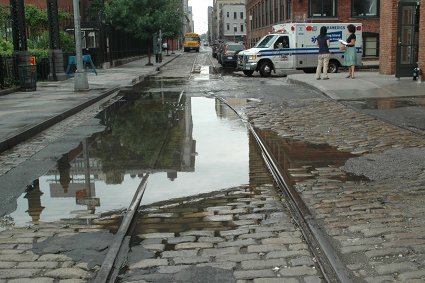‘Brooklyn underwater’ to deal with threat to coastline

DSC_0008_Flooded_Plymouth_Street.jpg
When one national political candidate, who will be nameless, joked about his opponent being overly concerned with “rising sea levels,” his supporters laughed.
But chances are that the subject isn’t a joke in Coney Island, Sea Gate, Manhattan Beach, Red Hook or Gowanus. Scientists say that if the number of storms keep increasing, the shoreline of Coney could be under water by 2080.
Coney, parts of Gravesend and Sheepshead Bay, the Sunset Park waterfront, Red Hook, the Jamaica Bay shoreline, the Navy Yard area, and the areas around the Gowanus Canal and Newtown Creek will all be at risk during a major storm, according to the city’s Office of Emergency Management (OEM).